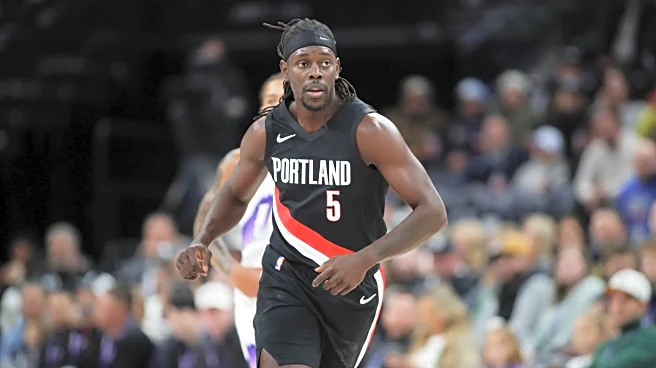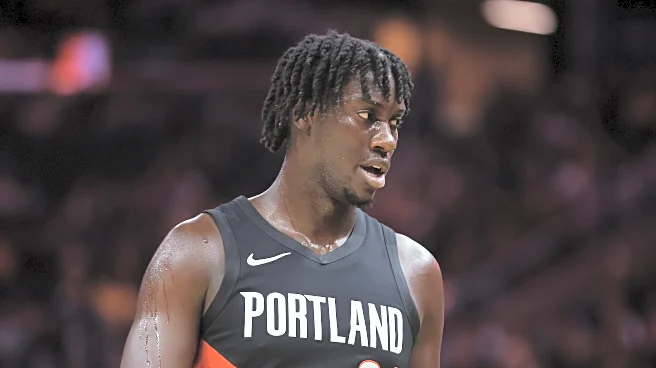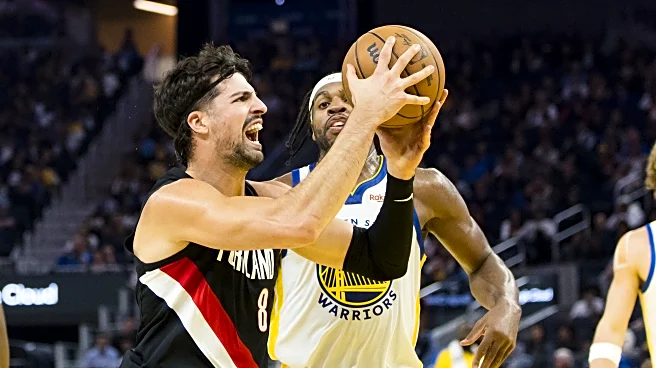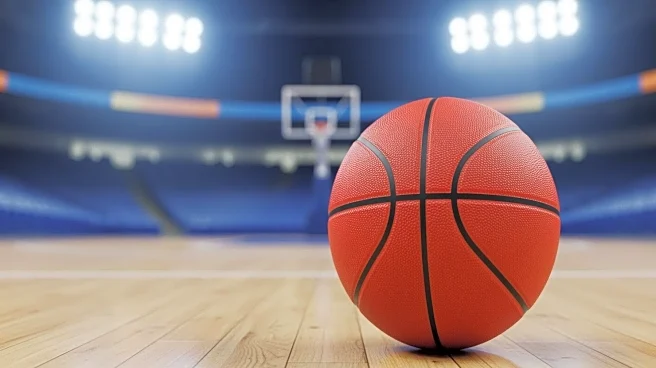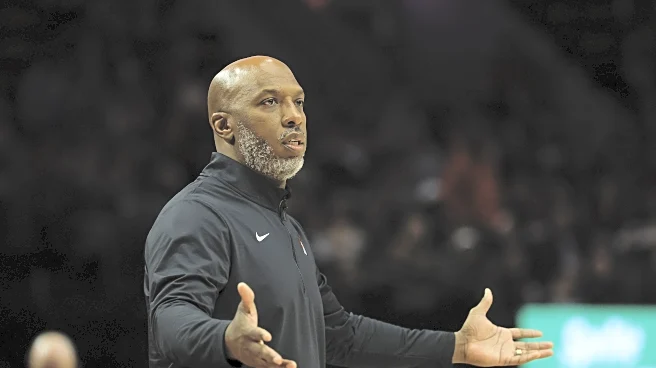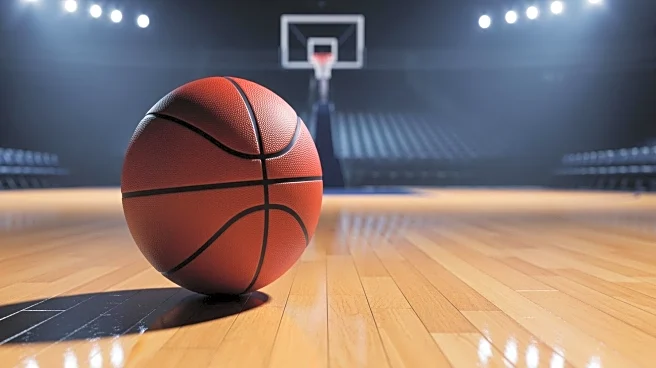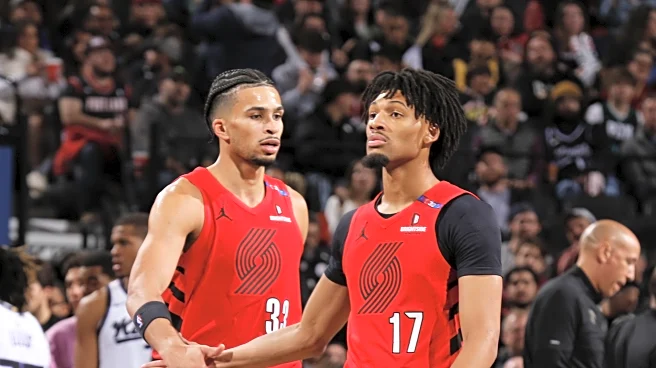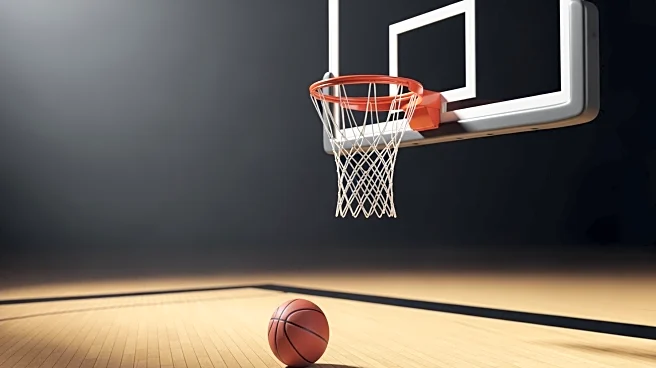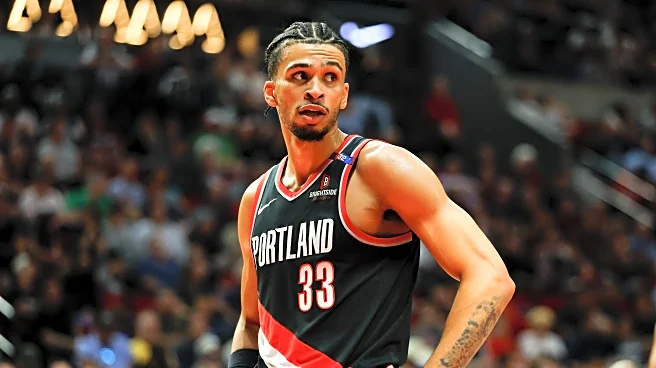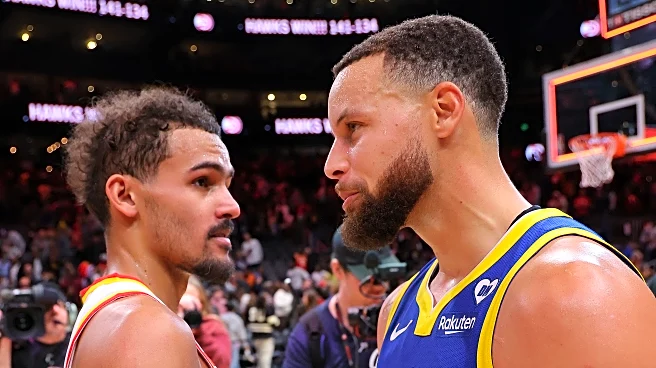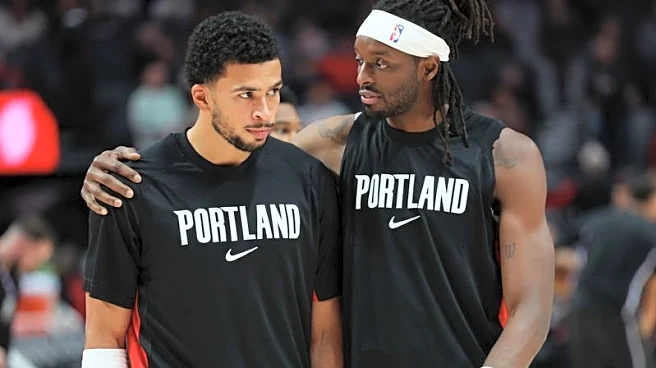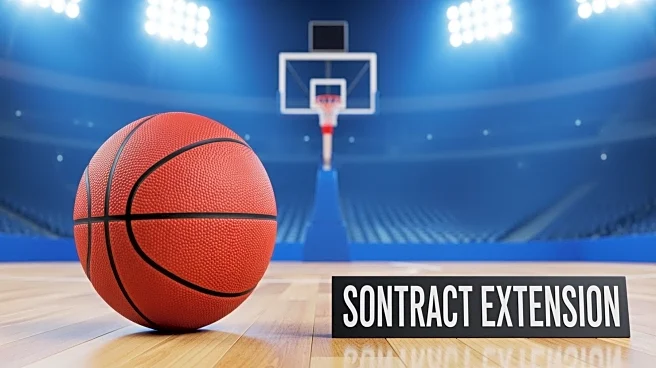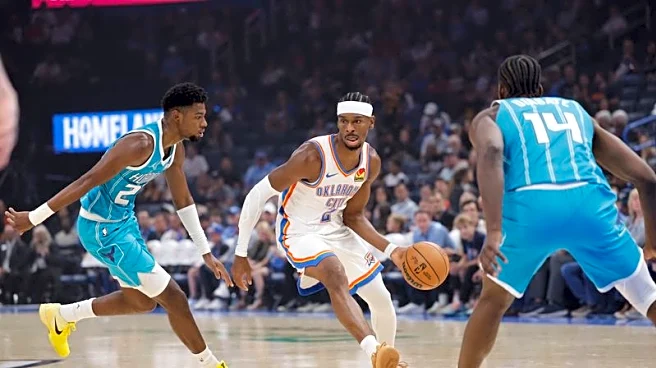Today marks the beginning of the 2025-26 NBA regular season schedule. The Portland Trail Blazers open their new campaign Wednesday at 7:00 PM, Pacific against the Minnesota Timberwolves in the Moda Center. In preparation for the big event, we’re previewing the season ahead.
Today we’re going to catch you up on all the changes the Blazers have undergone this summer. If the last time you paid attention to them was April, here’s what you’ve missed.
A Fancy New Center
In June the Blazers drafted Chinese center Yang Hansen.
(approximate pronunciation: yong honsen) He’s 7’1 and 20 years old. Portland shocked the league when they traded down from the 11th spot to select him 16th overall. Since then he’s shown flashes of promise along with plenty of charisma.
Hansen’s court vision is amazing for a seven-footer. He passes creatively and eagerly. He’s also quick for his size when running up and down the court. The Blazers might be seeing visions of a poor man’s Nikola Jokic in their future. If his three-point shooting and post footwork improve a little bit, Hansen should become a potent offensive weapon.
On defense Hansen is collecting fouls like they were Magic the Gathering cards. He’s not a strong rebounder. He sometimes gets overwhelmed when forced to defend on the perimeter.
Hansen has a long way to go before becoming a complete player, but he’s fun to watch and has a resilience that Blazers fans should love.
Speaking of love…rookie Caleb Love has joined the team as a two-way player along with Sidy Cissoko of France. Chances are both will see serious time with the Rip City Remix, but early-season injuries may press them into duty. Love is known for his offensive willingness. He’s never met a shot he doesn’t like. Cissoko has a big body and gets around the court as a jack of all trades.
Goodbyes and Hellos
Portland bought out center Deandre Ayton this summer. He’s now a member of the Los Angeles Lakers. They also traded Anfernee Simons to the Boston Celtics for Jrue Holiday.
Doing so, the Blazers lost two of their top four scorers. Holiday will help their defense and playmaking. They need both at the guard positions, so that’s good. He’s not the scorer he once was and, at 35, it remains to be seen whether he can play big minutes with speed and energy.
Also grabbing headlines: the Blazers used their mid-level cap exception to sign Damian Lillard after the Milwaukee Bucks waived him to make room for Pacers center Myles Turner. Lillard is recovering from an injury. He’s not expected to play this season. You’ll probably see him on the bench while he rehabs though.
Cumulatively, this amounts to a different roster for Portland. Whether it’s a better one remains to be seen.
Growth Curves
Guard Shaedon Sharpe has been at the epicenter of the roster during training camp and preseason. His shot looks more confident, his moves more aggressive. He’s banking on the pull-up jumper at the foul line and it’s paying off. That so-far-reliable perimeter move is distracting defenders, freeing him up to get to the rim when they play closer to him.
Signs have been promising for Sharpe. He might be poised to take over as an offensive star. The Blazers extended his rookie contract for four more years accordingly.
Scoot Henderson is a year behind Sharpe and has much to prove. Unfortunately he tore a hamstring in late summer and will be out for the first month or two of the season. This was a blow, not just because of the depth chart but because of Scoot’s own need for confidence and progress.
Center Donovan Clingan looked completely comfortable in his own skin during the preseason. He’s become the rebounding, shot-blocking machine the Blazers expected when they spent a lottery pick on him two seasons ago. He still has trouble patrolling outside the lane but his teammates are covering space better than ever, so there’s hope that Portland’s defense will be relatively seamless this year.
Toumani Camara and Deni Avdija continue to form the backbone of the roster. Camara’s defense looks as good as ever. He seems comfortable on the offensive end as well. Like Sharpe, Camara signed a four-year contract extension this summer.
Avdija was serviceable in exhibition. The Blazers will need to figure out how to feature him. He excels when he has the ball and is a main player, but the growth of Sharpe and Henderson depend on ball control as well. Shuffling the potential stars together will be one of the challenges before Head Coach Chauncey Billups and his staff.
It’s a pretty safe bet that if player development doesn’t go well, nothing else will matter. Portland’s present and future lie in the hands of Henderson, Sharpe, Avdija, Camara, Clingan, and Hansen. Everyone else is either infrastructure support or a longshot to join that group.
Either way, the Blazers have entered the “publish or perish” phase of their rebuilding project. We’ll see what Professor Scoot and company end up adding to the conversation.
Wither Jerami Grant?
The big question mark in the rotation is veteran forward Jerami Grant. He needs to bounce back from a severe slump last season, wherein his offense tanked and his defense was ground-bound.
Grant remains in a virtual tie with Holiday as the highest-paid player on the team. He’s been a long-time starter. Integrating him and restoring his confidence would help the team immensely, but pathways to do so remain unclear. Camara and Avdija are edging Grant out of the starting lineup. His own lack of offensive reliability is threatening to keep him off the floor. The outlook remains murky for one of Portland’s key players.
Style Shift
Along with a new lineup and new stage of development comes a new style of play for the Blazers. It can best be typified as: defend hard, run fast, shoot often. You’re going to see Portland pressing full court, disrupting passing lanes, and trying to run out on any turnover and after most rebounds. It’s a frantic, high-energy approach, somewhat in contrast to the placid, percentage-based offense (and even defense) employed when Simons, Grant, and Ayton formed the core of the roster. Basically what you saw Toumani Camara doing last season, all the Blazers are now going to do.
Injuries and Depth
Playing a faster-paced, defensively-disruptive style is going to put wear and tear on bodies. Injuries are a constant concern. In addition to Henderson, veterans Matisse Thybulle and Robert Williams III have been absent in the preseason for health reasons.
Portland isn’t exactly the most stable team out there, even under normal circumstances. If they don’t have enough players to create hell for 48 minutes, opponents are going to “rope a dope” them, letting the Blazers throw punches until they tire, then running them out of the building for the knockout in the second half.
Depth also plays into the equation. No matter who suits up, it’s likely the Blazers will need to go ten deep into the rotation to keep up their energy. Players like Kris Murray and Rayan Rupert will have to step up at various points of the season. Portland’s mid-to-deep bench is largely untried. It’s a concern.
The nightmare scenario for the Blazers is whiteboarding ten players they want to play, having three of them get injured, finding two or three veterans are unable to keep up with the pace for four quarters, and then having to dig into the back end of a bench which–despite offseason optimism–looks very much like the rosters they played during their recent, win-free rebuilding years. Either that or they burn out their core players in the first half of the season (Tom Thibodeau style) and suffer as they hit a wall down the stretch.
Other Questions
Despite new players and a new focus, the Blazers still have plenty of questions to answer this year. During the summer, we rehearsed several of them. Here’s a summary. You can click through the links for an extended, nuanced discussion of each:
- Can they shoot three-pointers well enough to overcome teams that still focus on the long-ball? For all their youth and athleticism, Portland still lacks deep shooters.
- We know the Blazers want to push tempo, but can they avoid giving up more fast break points than they score? This was a problem last season. It remained so in preseason.
- Playing smaller, quicker lineups–and having one of two giant centers not producing rebounds yet–will the Blazers be able to stay afloat on the glass? Without rebounding, their good defense goes to waste and their offensive opportunities become fewer.
- Will their new defense be enough to make up for the potential lack of offensive firepower?
- Can they stop turning over the ball so much?
These things are not automatically negatives. But the team will need to address these matters in ways they haven’t previously, else all the change will be a new coat of paint on an unstable wall.
Season Goals
The goal for Portland this year is simple: win as many games as possible. That sounds obvious, but this is the first year in a while where victories have mattered as much as ping pong balls.
The consensus seems to be that a good season for the Blazers would find them in the Play-In Tournament next April.
The good news: that would represent serious progress for the team.
The bad news: the Play-In exists in the Western Conference because it has to. Somebody is going to fall into those 7th-10th spots. What does it really mean?
In a way, this is an echo of Portland’s Damian Lillard-led teams facing the Golden State Warriors every year in the playoffs in the late 2010’s. Somebody was going to lose to the eventual champs. It might as well be the Blazers. That didn’t mean Portland was actually great. It just meant they were next in line to get ousted that year.
This is a lower level of achievement, but basically the same song. Finishing 7th-10th in the West is a million miles from contending, or even being good by conference standards.
That said, being closer to good is a worthy goal for a team that’s been anything but for the last four seasons. Exceeding their 36 win total from last year would be a great first step. Any final record that begins with a “4” would be amazing. It’s a modest bar, but the team will be working–and probably running–hard to achieve it.
